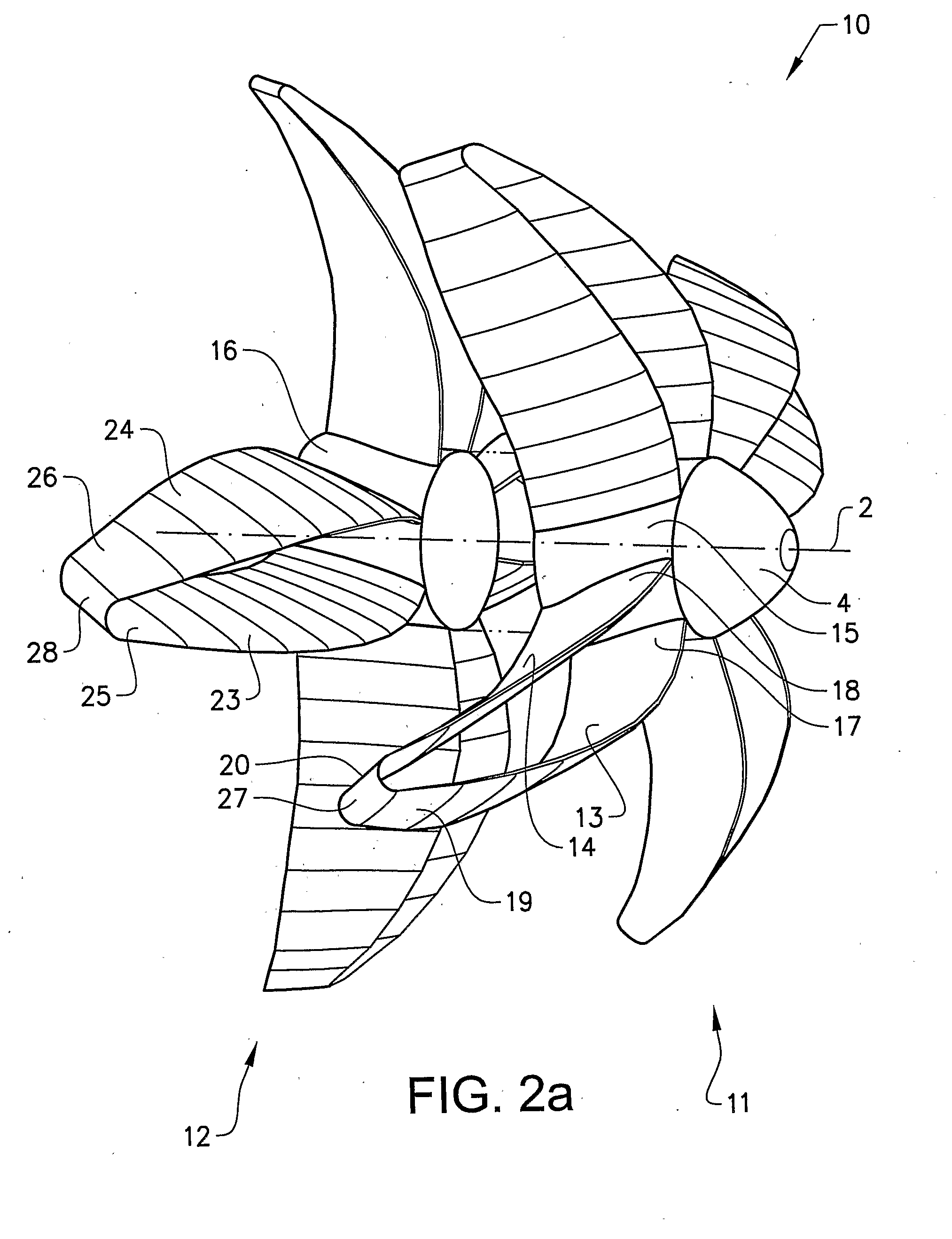Air propeller arrangement and aircraft
- Summary
- Abstract
- Description
- Claims
- Application Information
AI Technical Summary
Benefits of technology
Problems solved by technology
Method used
Image
Examples
Embodiment Construction
[0037]Conventionally, each propeller blade discussed here has an airfoil shape with a leading edge, a trailing edge, a suction side and a pressure side. The term chord refers to the imaginary straight line joining the trailing edge and the center of curvature of the leading edge. The term chord length (c) is the distance between the trailing edge and the point on the leading edge where the chord intersects the leading edge, and is thus a measure of the width of the blade. Further, each blade has a root (inner) end arranged at the hub member and a tip (outer) end positioned at a distance from the hub member as seen in a radial direction of the hub member. Commonly, the chord length varies along the blade with a greater length at the root end and a smaller length at the tip end.
[0038]Below it is referred to 0.25c and 0.5c; these terms refer to an imaginary line. drawn between the points representing 25% and 50%, respectively, of the length of the chord line along the blade profile as ...
PUM
 Login to View More
Login to View More Abstract
Description
Claims
Application Information
 Login to View More
Login to View More - R&D
- Intellectual Property
- Life Sciences
- Materials
- Tech Scout
- Unparalleled Data Quality
- Higher Quality Content
- 60% Fewer Hallucinations
Browse by: Latest US Patents, China's latest patents, Technical Efficacy Thesaurus, Application Domain, Technology Topic, Popular Technical Reports.
© 2025 PatSnap. All rights reserved.Legal|Privacy policy|Modern Slavery Act Transparency Statement|Sitemap|About US| Contact US: help@patsnap.com



